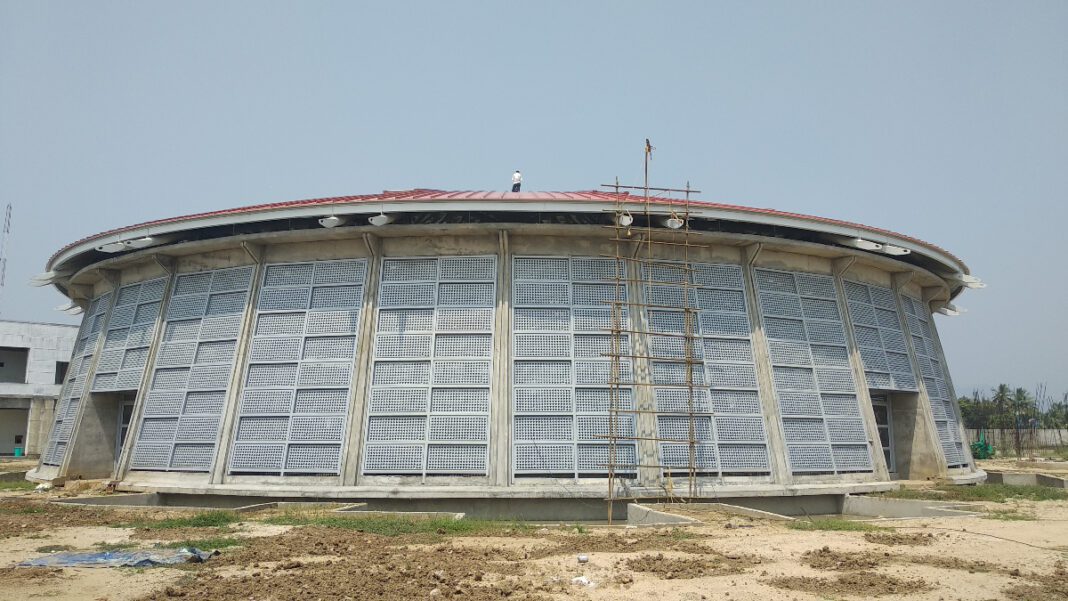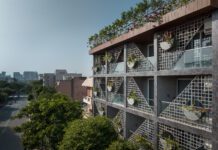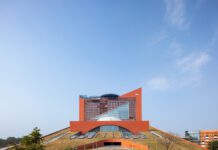Nettur Technical Training Foundation Institute in Vellore, Tamil Nadu, showcases the modernity of architectural designs, and at the epicentre of this institute is a state-of-the-art workshop. It acts as a focal point and provides easy physical and visual access for its users, due to its circular design the structure is flexible, helps with activity segregation, and enhances the functionality of the space further.
From the inception of this institute’s project, the workshop was planned simultaneously along with the institute and was an integral part of the layout. The owners considered it the emblem of the institute, with the aim of featuring it prominently in all their institutional imagery. The workshop was built after the Academic Block was constructed.
Architect Noel V Jerald, an Associate from CCBA Designs along with the consultant Bal Kulkarni, Managing Director, Delcons Consultants India Pvt Ltd dives into the intricate and technical details of the project.
Versatile Vision
A deep understanding of materials is crucial to choose an appropriate material to be used for a particular mode to achieve sustainability. And here, the circular design of the workshop was the key behind adopting steel as a material since it is versatile, provides strength and sustainability, and allows robust and durable structure. Extensive calculations and multiple iterations helped achieve a design which minimised the usage of steel.
The design of this workshop highlights the elegance of steel, featuring an open web structure supported by steel trusses and ring beams. It achieves an impressive uninterrupted span of about 42 m. For the facade, perforated powder-coated CRC steel sheets were used which worked in duality to filter light and air into the interiors.
The semi-spherical roof was essential for maintaining the workshop’s overall design language. Achieving that shape required precise construction of the supporting members, thus they were made of steel instead of concrete. Elements made of concrete would override the overall geometry, and hamper the curved sleek structure in the interior. Steel trusses were connected to a ring beam that circled the layout’s perimeter. Additionally, the dome-shaped roof petals were crafted identically in terms of their size and shape for phased erection. The roof was assembled using a crane, following a precise sequence to place both the main and the secondary girders.
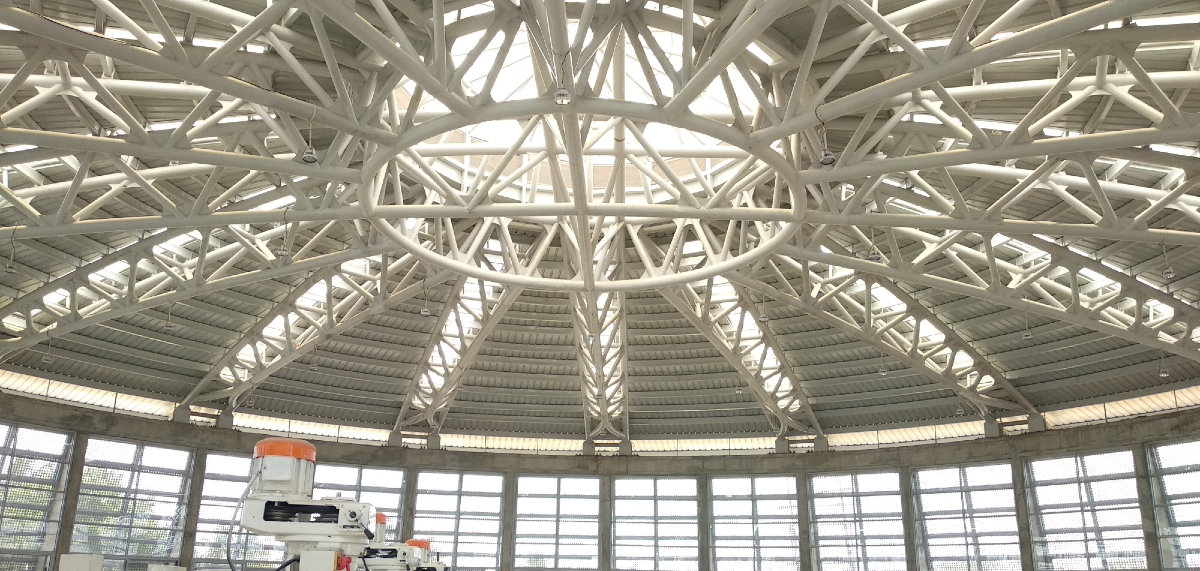
Precise Puzzle Pieces
In order to achieve a long and uninterrupted span for the workshop, the 42 m long truss was fabricated on-site, and positioned cross-sectionally over a ring beam. This beam would transfer the load to the tapered RCC Columns situated around the periphery of the design, and these columns were uniformly designed with a tapered shape so that they could be poured from a single mould. The fabrication of the truss on-site helped address a tough challenge, and this approach helped minimise time, and infrastructure, and be efficient and cost-effective.
Cutting the sheets for the roof was a tedious challenge to tick off as they needed to be of specific dimensions before finally laying them. The construction was carried out in numerous phases, starting with the academic block, i.e., laboratories. After the completion of this section, construction of the workshop commenced. Phase-wise construction and accessibility to the site from three sides helped minimise the challenges of construction.
Basics to Biophilic
In terms of sustainability, steel was used for its versatility, durability, recyclability, and reduced environmental impact. Secondly, biophilic design was featured in the workshop to integrate nature into the built environment. The spaces between columns were filled with vegetation, positioned between an aluminium jaali wall on the exterior and operable glass windows on the interior. This design provides aesthetic appeal and helps improve air quality.
A major water body runs along the outer wall of this workshop, which aids in passive cooling which reduces the building’s heat gain and provides a calming, reflective element to the surroundings. Natural cooling system helps maintain a comfortable indoor temperature, reducing reliance on artificial cooling methods.
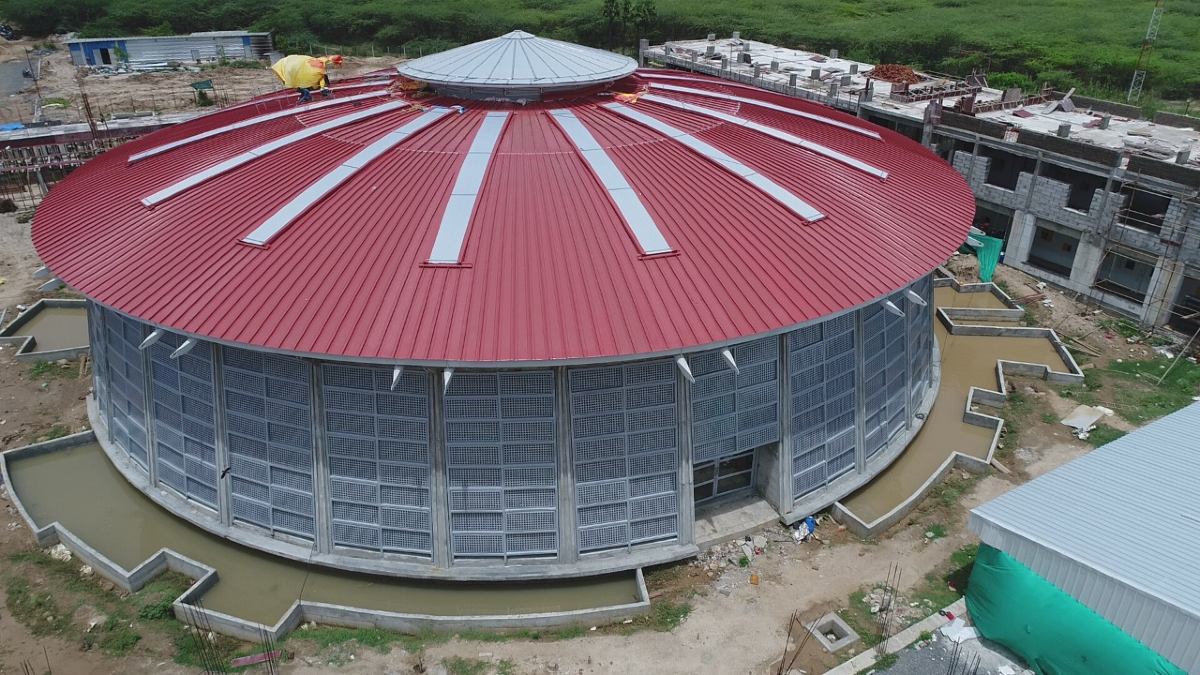
Skylights have been positioned throughout the workshop to maximise natural light, enhance ventilation and reduce the need for artificial lighting. They also facilitate and improve air circulation, quality and create more pleasant working environments.
The workshop at NTTF Institute has been designed to accommodate 1,200 individuals, and certain provisions were included in the initial design phases to incorporate future modifications. This workshop can easily scale up to accommodate the increased demand, while maintaining its functionality and efficiency, without requiring significant redesigns to ongoing activities.
Quote:
“In projects of such nature, it’s crucial to ensure that the institute’s purpose is met and all the elements are planned properly. This would allow the institute to operate effectively while being constructed in phases. Facilities such as the canteen and meeting spaces can be built accordingly. Additionally, the sequence of the construction should take land availability and road access into consideration.
Bal Kulkarni, Managing Director, Delcons Consultants India Pvt Ltd
“Steel is an extremely versatile material and we have been using more in recent years. It provides strength, can span long lengths, has aesthetic qualities which are unparalleled. Steel also provides a type of lightness to your structures which is rarely achievable with other materials. It can be heavy but still seem light, it can be solid but seem transparent, it seems rigid but it offers flexibility. In that sense, steel is limitless.”
Noel V Jerald, Associate, CCBA Designs
Fact File:
Project: Nettur Technical Training Foundation (NTTF), Tamil Nadu
Client: NTTF
Architect: CCBA Designs
Consultant: Delcons Consultants India Pvt Ltd, Pune
Fabricator: C-Tech Engineering, Vellore
Tonnage: 115 Tonne
Status: Completed


